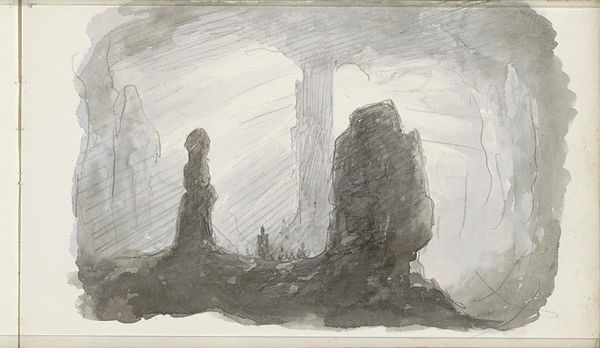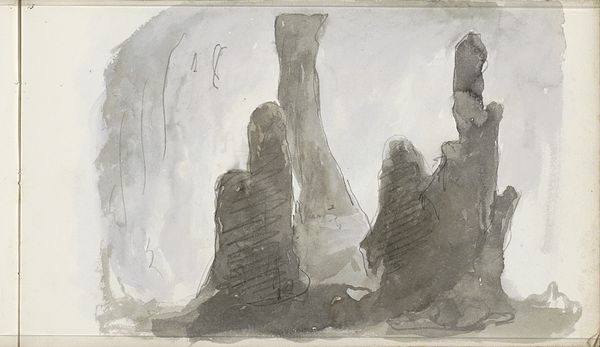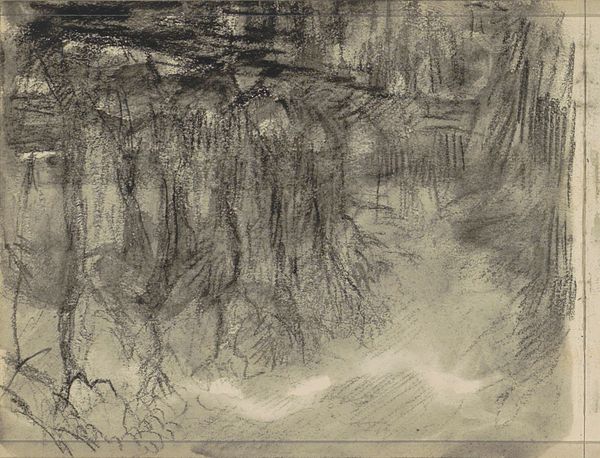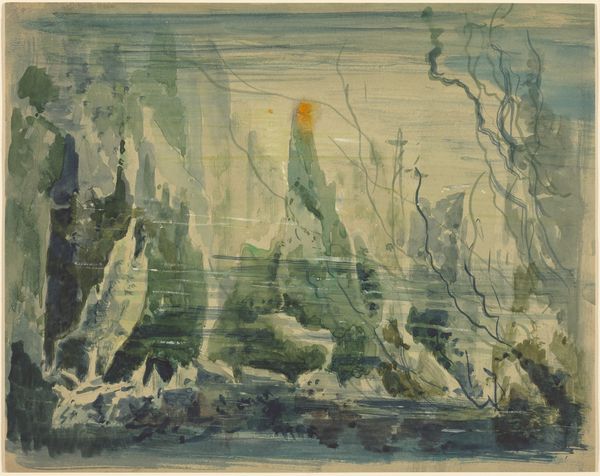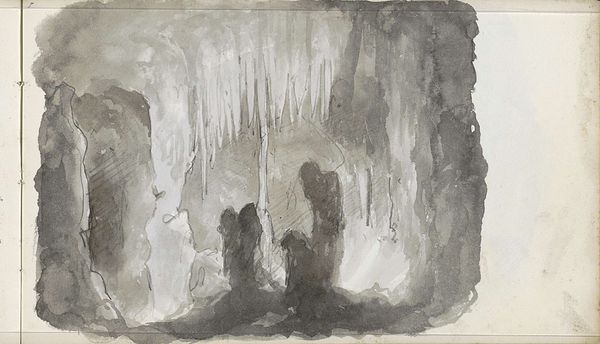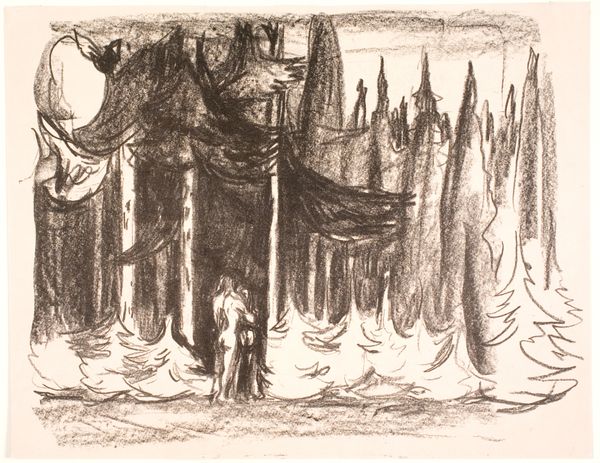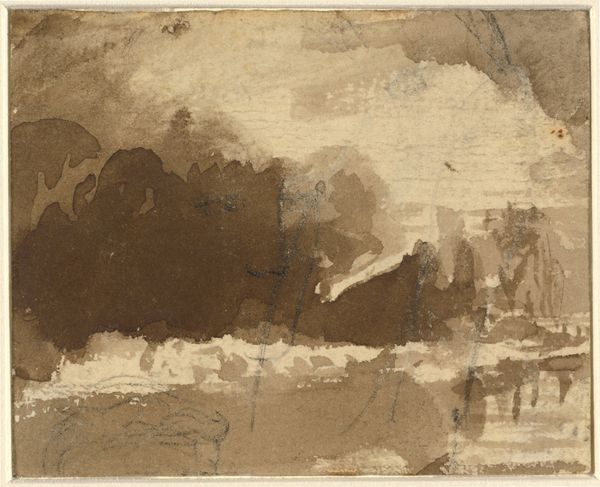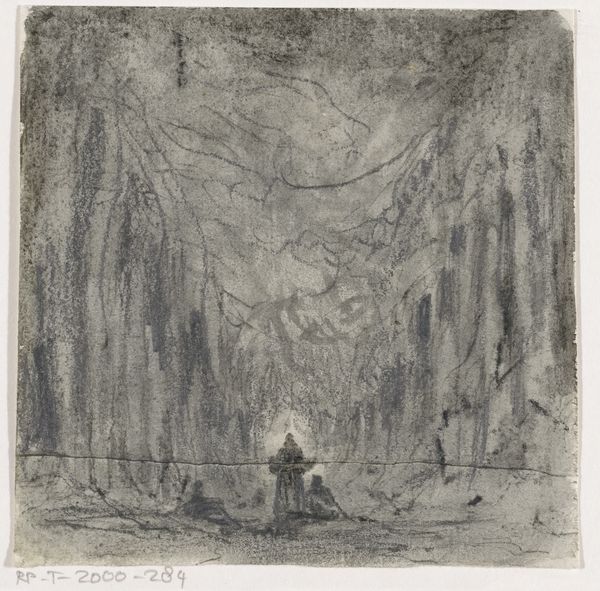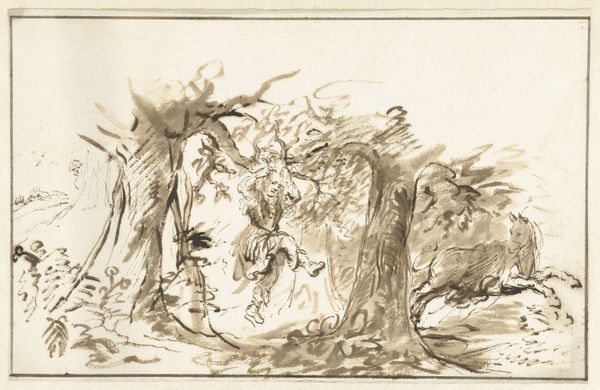
Copyright: Rijks Museum: Open Domain
Curator: I'm immediately struck by the way the light barely touches the scene. It's somber, a bit daunting. Editor: That’s right, what we're looking at is "Druipsteengrot," which roughly translates to "Dripstone Cave." It's a drawing rendered with ink, watercolor, and pencil, made sometime between 1841 and 1865 by Petrus Johannes Schotel. It resides here at the Rijksmuseum. Curator: Schotel really captures the cave's mysterious atmosphere. It's like peeking into a hidden world. Look at the small figures; they seem so insignificant compared to the scale of the rocks and stalactites. Editor: Indeed, there’s a clear manipulation of scale at play, underscoring a sense of sublime awe mixed with slight terror. Consider how the dripping water is suggested through simple, vertical lines, echoing the Romanticism prevalent at the time. It also bears elements of realism, striving for factual representation rather than sheer embellishment. Curator: It feels like I’m standing at the threshold of something unknown, both terrifying and exhilarating. I’d be interested to hear sounds when viewing this, sounds of nature like dripping water and echoed voices. It amplifies that primal connection we have with nature. Editor: An evocative perspective. We can also note how Schotel's expert use of tonal variation brings depth and volume to the cavernous space, creating a tangible, almost palpable, sense of depth. He masterfully orchestrates a play of dark and light, creating strong chiaroscuro effects typical of Romantic landscape drawing. Curator: It pulls us into a world that feels both ancient and timeless, don't you think? And look closely at that little figure standing within the depth. Is it Schotel perhaps? Or maybe a reference to Caspar David Friedrich’s "Wanderer"? Editor: The artist seems more focused on depicting the physical phenomena and objective experience of space, the weight of geological formations, and the interplay of light and shadow within such an enclosure. I would argue that Schotel is probably less preoccupied with injecting existential or metaphorical significance into this work. Curator: Hmm, maybe you’re right. Regardless, it inspires a sense of wonder and encourages a deeper appreciation for the Earth's hidden artistry. Editor: I agree. It showcases not only the external spectacle, but also an intriguing lens through which the 19th-century viewer encountered the natural world, mediating perception with artistic skill and intent.
Comments
No comments
Be the first to comment and join the conversation on the ultimate creative platform.
